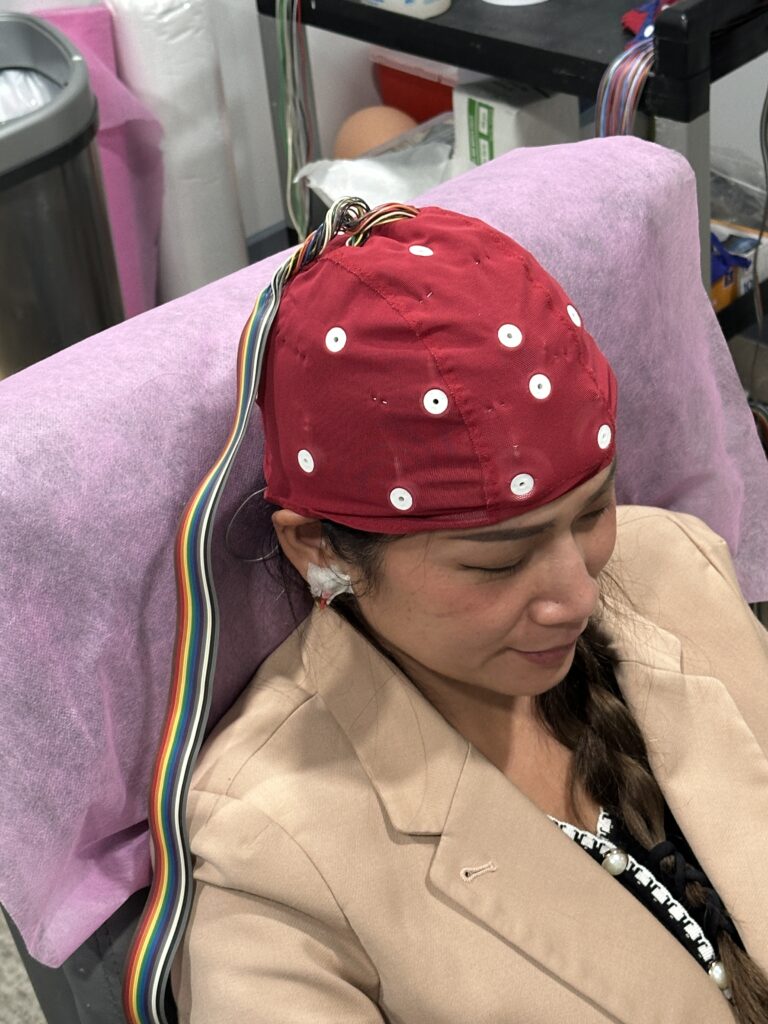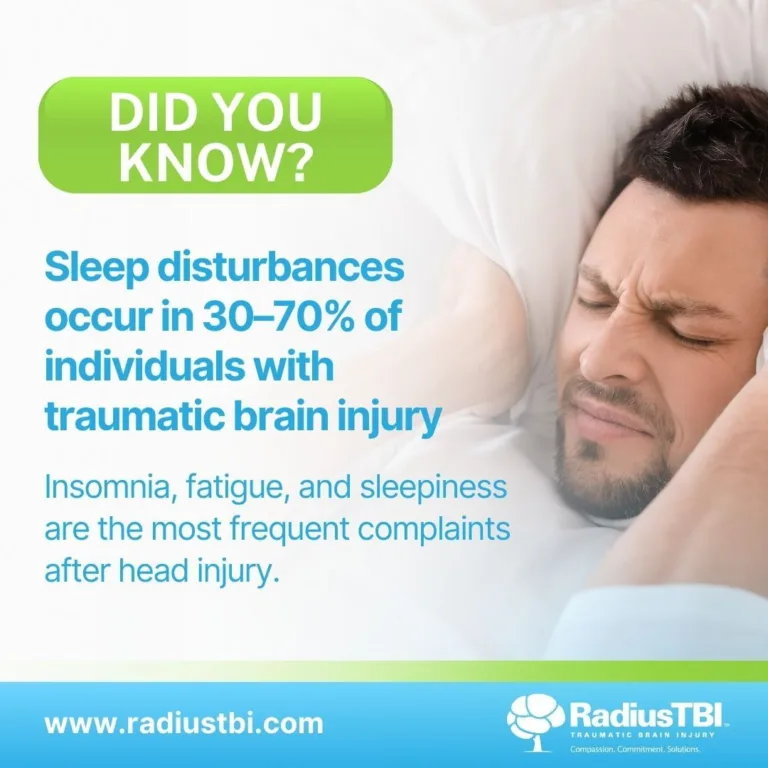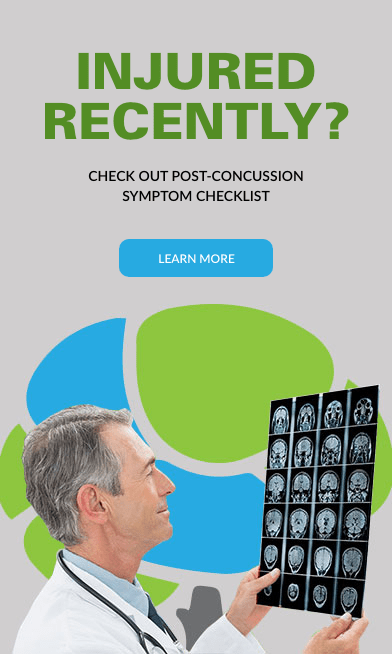Unlocking the Potential of Your Brain with Neurofeedback Therapy
Brain Treatments for Concussion / Traumatic Brain Injury Sufferers in Ft. Lauderdale, Tampa, and Orlando, FL
Do you experience anxiety, ADHD, depression, memory problem, sleep problems, or sleep disorders?
Neurofeedback therapy may help you feel better overall and reduce the symptoms of these conditions. At Radius TBI, our specialists have years of experience administering effective, non-invasive Neurofeedback therapy sessions in a calm, supportive environment. Start your journey towards a healthier mind today.
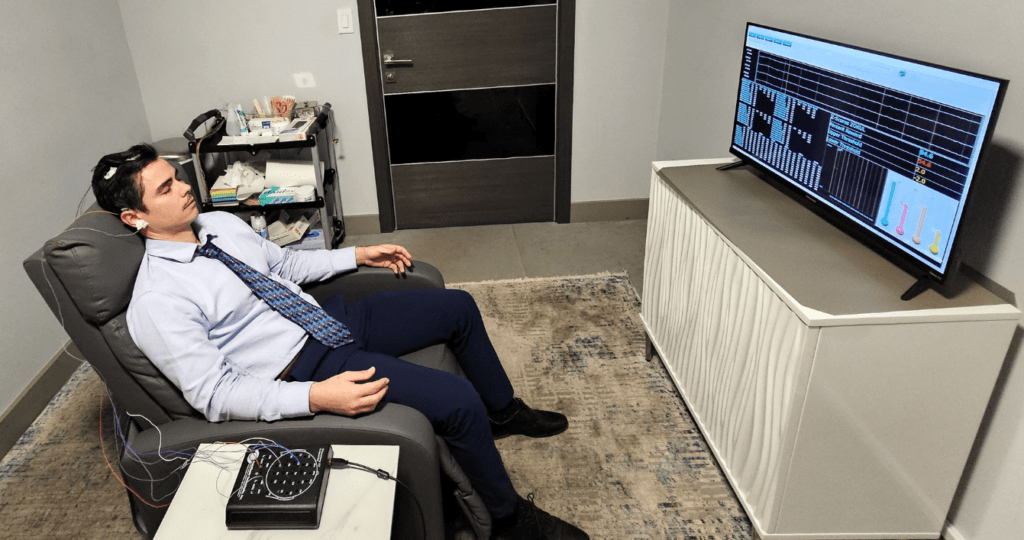
What is Neurofeedback Therapy?
Experience the power of modern brain training techniques with Neurofeedback therapy, EEG biofeedback, or Neurotherapy. With real-time brain activity displays and scalp sensors, patients learn how to condition their brain activity through positive and negative feedback.
The neurofeedback therapists monitor brain waves. Neurotherapy aids patients in gaining control over these processes. On the other hand, neurofeedback aims to give your brain a visual representation of its internal processes, allowing you to train your brain through a series of mental exercises.
Whether you’re looking to manage PTSD or generalized anxiety disorders, studies conducted by the National Institute of Health show a statistically significant improvement with Neurofeedback therapy. At Radius TBI, our specialists have years of experience administering effective, non-invasive Neurofeedback therapy sessions in a calm, supportive environment. Start your journey towards a healthier mind today.
How Does Neurofeedback Work?
The therapy uses a machine capable of reading and transmitting brain activity, known as a Electroencephalogram (EEG), to assess your condition and recommend the appropriate treatment.
During a therapy session, a specialist will apply sensors to your scalp to record the electrical activity of your brain. This data is then converted into visual information, which doctors can use to understand your brainwave patterns in real-time.
You will be led through various exercises to help you learn how to control your brainwaves, such as playing a video game that rewards you for maintaining a specific brainwave pattern. The program can also be integrated into music or video applications, where the program interrupts when your wave patterns deviate from the desired acceptable range.
Neurotherapy essentially outsources a biological function that the brain is used to by encouraging proper function. In our everyday lives, our brains reward us for good behavior by releasing dopamine when we do something positive, such as working out or socializing with friends.
With Neurotherapy, the desired wave pattern will become second nature over time, leading to improved mental well-being and cognitive function.
Benefits of Neurofeedback Therapy
This brain training has been widely used in the treatment of many diseases and disorders and numerous mental health issues, including:
Anxiety and stress:
Neurofeedback therapy can particularly benefit individuals experiencing anxiety and stress. Here’s an explanation of how it can help:
- Understanding Brainwave Patterns: Neurofeedback therapy involves measuring and monitoring brainwave activity using electroencephalography (EEG) technology. It provides real-time information about the individual’s brain activity. In anxiety and stress, the therapist can identify specific patterns of brainwave activity associated with heightened stress responses.
- Calming Brainwave Training: Individuals can learn to recognize and control these specific brainwave patterns through neurofeedback. The therapy helps individuals understand when their brain is entering a state of anxiety or stress. This awareness is crucial as many people may not even realize when they are becoming anxious or stressed.
- Real-Time Feedback: During a session, individuals receive immediate feedback, often through visual or auditory cues. For instance, they might see a visual representation of their brainwave activity on a screen. When their brainwaves shift into a more calm and relaxed state, they may receive positive feedback, such as a soothing image or sound. This feedback reinforces the desired brainwave patterns associated with relaxation.
- Self-Regulation: As individuals continue therapy, they learn to self-regulate their brain activity. They become better at shifting from high-stress brainwave patterns to more relaxed ones, even outside therapy sessions.
- Reduced Anxiety and Stress: As individuals gain more control over their brainwave patterns and develop better self-regulation skills, they often experience reduced anxiety and stress. They can respond to stressful situations more calmly and may find it easier to manage everyday stressors.
- Long-Term Benefits: The therapy can provide long-term benefits for anxiety and stress management. By rewiring the brain to respond more calmly to stressors, individuals can enjoy sustained improvements in their overall well-being.
It’s important to note that brain therapy is typically conducted by trained professionals, and the number of sessions required can vary from person to person. It is often used with other therapeutic approaches, such as cognitive-behavioral therapy (CBT), to address the underlying causes of anxiety and stress. Neurofeedback therapy offers individuals a valuable tool to enhance their ability to manage and reduce anxiety and stress.
Age-related cognitive decline:
Age-related cognitive degeneration refers to the natural and gradual deterioration in cognitive function that can occur as people age. This decline may manifest as problems with memory, attention, reasoning, and other cognitive abilities.
Acquired brain injuries:
Acquired brain injuries typically occur after birth and can result from various causes, such as traumatic brain injuries (TBI), strokes, infections, tumors, or other medical conditions affecting the brain.
Behavioral disorders:
Behavioral disorders refer to a broad category of mental health conditions characterized by persistent patterns of behaviors that deviate significantly from societal norms, causing distress or impairment in daily life. Behavioral disorders include conduct disorder, oppositional defiant disorder, and disruptive mood dysregulation disorder. Here’s how the therapy can benefit individuals with behavioral disorders:
- Self-Regulation: Brain training focuses on training individuals to regulate their brain activity. For those with behavioral disorders, this can be particularly helpful because these disorders often involve difficulties in impulse control, emotional regulation, and attention. Neurofeedback can improve self-regulation and reduce impulsive and disruptive behaviors by teaching individuals to control their brainwaves.
- Attention and Focus: Many behavioral disorders, such as attention-deficit/hyperactivity disorder (ADHD), involve issues with attention and concentration. Training the brain can help individuals with ADHD enhance their ability to focus by guiding them toward more optimal brainwave patterns associated with attention.
- Emotional Regulation: Behavioral disorders often involve emotional dysregulation, including intense mood swings and difficulty managing emotions. Neurofeedback can help individuals gain better control over their emotional responses by targeting brainwave patterns associated with mood regulation.
- Reducing Aggressive Behavior: For disorders like conduct disorder or oppositional defiant disorder, which may involve aggressive or oppositional behaviors, neurofeedback can decrease these behaviors by promoting calmer brainwave patterns and reducing impulsivity.
- Enhancing Self-Awareness: The therapy provides individuals with real-time information about their brain activity. This increased awareness can be valuable for those with behavioral disorders as it allows them to recognize when their brain is dysregulated, empowering them to employ strategies to self-calm and self-regulate.
- Complementing Other Therapies: Neurofeedback can be used alongside other therapeutic approaches, such as counseling or medication, to provide a comprehensive treatment plan for individuals with behavioral disorders. It can enhance the effectiveness of these treatments by addressing the underlying brain activity patterns associated with the disorder.
Depression:
Neurofeedback therapy can benefit individuals with depression by addressing the underlying brainwave patterns associated with the condition. Here’s how this therapy may help those with depression:
- Brainwave Regulation: Depression is often linked to abnormal patterns of brainwave activity, such as increased slow-wave patterns and decreased fast-wave patterns. Neurofeedback aims to regulate these patterns by providing real-time feedback to the individual. Through this feedback, patients can learn to shift their brain activity towards more balanced patterns, which may help alleviate depressive symptoms.
- Emotional Regulation: Neurofeedback can also assist in emotional regulation. Individuals with depression may experience heightened negative emotions and difficulty managing them. By training the brain to achieve more stable and adaptive emotional responses, neurofeedback can contribute to a more positive emotional state.
- Improved Cognitive Function: Depression often affects cognitive functions like concentration, memory, and decision-making. Neurofeedback may help enhance these cognitive abilities by optimizing brainwave patterns associated with mental processes, improving overall functioning and a sense of control.
- Reduced Anxiety: Many individuals with depression also experience symptoms of anxiety. Neurofeedback can help individuals manage stress by promoting the production of calming brainwave patterns, which can contribute to an overall reduction in both anxiety and depressive symptoms.
- Long-Term Benefits: While medication and traditional talk therapy can be effective for depression, neurofeedback therapy offers a non-invasive and potentially longer-lasting solution. By training the brain to maintain healthier patterns of activity, individuals may experience sustained improvements in mood and overall well-being even after the treatment is complete.
The effectiveness of brain therapy can vary from person to person, and it is often used in conjunction with other therapeutic approaches, such as psychotherapy and medication, depending on the severity and individual needs of the patient. Individuals considering neurofeedback for depression should consult a qualified healthcare professional to determine the most suitable treatment plan.
Insomnia and sleep disorders:
Neurofeedback therapy can offer potential benefits to individuals experiencing insomnia and sleep disorders. Here’s how neurofeedback can help:
- Regulating Brain Activity: Neurofeedback involves monitoring an individual’s brainwave patterns in real-time; this means tracking the brain’s activity during sleep. Neurofeedback can identify irregularities or patterns associated with sleep disturbances through this monitoring.
- Customized Training: Once the irregularities are identified, neurofeedback therapy can be tailored to target and train specific brainwave patterns. The goal is to teach the brain to produce the proper brainwave patterns conducive to restful sleep.
- Improving Sleep Quality: Neurofeedback helps individuals learn to regulate their brain activity during sleep, promoting more profound and restorative sleep. It can address frequent awakenings and difficulty falling or staying asleep, which is common in insomnia and sleep disorders.
- Reducing Anxiety and Stress: Anxiety and stress can often contribute to sleep problems. Brain training can also be used to address the underlying causes of these conditions. Neurofeedback indirectly supports better sleep by helping individuals manage stress and anxiety through brainwave training.
- Long-Term Benefits: Brain training aims to create lasting changes in brain function. As individuals continue with neurofeedback sessions, improving sleep quality should become more sustainable over time, reducing the need for medication or other short-term solutions.
- Personalized Treatment: Neurofeedback therapy is highly individualized. It considers each person’s unique brainwave patterns and adjusts the training accordingly. This customized approach is particularly advantageous for addressing a person’s specific sleep-related challenges.
It’s important to note that the effectiveness of neurofeedback therapy for sleep disorders can vary from person to person. Some individuals may experience significant improvements, while others may see more modest benefits. Additionally, the duration and frequency of neurofeedback sessions can vary based on the severity of the sleep disorder and individual response to treatment.
Pain management:
Neurofeedback therapy can benefit pain management in individuals with chronic pain conditions. Here’s how it can help:
- Pain Perception: Neurofeedback can influence how the brain perceives and processes pain. Chronic pain often involves changes in the brain’s neural pathways, leading to increased sensitivity to pain signals. Neurofeedback aims to retrain these pathways by teaching the brain to respond differently to pain stimuli.
- Relaxation and Stress Reduction: Chronic pain is often associated with heightened stress and anxiety, exacerbating pain perception. Neurofeedback can help individuals learn to relax and reduce stress by training the brain to produce calming brainwave patterns. This relaxation response can, in turn, lessen the intensity of pain sensations.
- Improved Sleep: Many individuals with chronic pain also experience sleep disturbances, which can further worsen their pain. Neurofeedback can address sleep-related issues by teaching the brain to enter and maintain proper sleep stages. Better sleep quality can lead to reduced pain and improved overall well-being.
- Biofeedback Techniques: In pain management, biofeedback is often used alongside neurofeedback. Biofeedback involves training individuals to gain conscious control over physiological responses such as heart rate, breathing, and muscle tension, which are continually altered in chronic pain patients. By learning to control these responses, individuals can reduce the physical manifestations of pain and improve their ability to cope with it.
- Reduced Medication Dependence: Neurofeedback can offer an alternative or complementary approach to pain management, potentially reducing the reliance on pain medications. This is particularly important in cases where long-term use of pain medication may lead to side effects, dependency, or tolerance.
- Enhanced Quality of Life: Ultimately, by helping individuals better manage their pain, neurofeedback therapy can improve their quality of life. It can enable individuals to regain control over their pain and lead more fulfilling and active lives.
It’s essential to note that brain training for pain management is often part of a comprehensive treatment plan, and its effectiveness can vary from person to person.
Post-traumatic stress disorder (PTSD):
PTSD is a mental health condition that can develop after someone has experienced a traumatic event or series of events. It is characterized by symptoms such as intrusive thoughts, nightmares, flashbacks, heightened anxiety, and emotional distress. Here’s how neurofeedback therapy can benefit individuals with PTSD:
- Emotional Regulation: PTSD often leads to heightened emotional responses and difficulties regulating emotions. The therapy can help individuals learn to control their emotional responses better by teaching the brain to modulate specific brainwave patterns associated with emotional regulation.
- Reducing Hyperarousal: Many individuals with PTSD experience a constant state of hyperarousal, characterized by heightened alertness, exaggerated startle responses, and difficulty relaxing. The neuro therapy can help the brain shift from a hyperaroused state to a calmer, more relaxed state.
- Managing Flashbacks and Intrusive Memories: Brain training can target specific brainwave patterns associated with flashbacks and intrusive memories. By training the brain to regulate these patterns, individuals may experience a reduction in the frequency and intensity of flashbacks and intrusive thoughts.
- Improved Sleep: Sleep disturbances are common in PTSD. Neurofeedback can help individuals with PTSD learn to enter and maintain appropriate sleep stages, potentially alleviating insomnia and improving overall sleep quality.
- Enhanced Cognitive Function: PTSD can impair cognitive functioning, including memory and concentration. Neurofeedback can promote healthier brainwave patterns related to cognitive function, potentially improving memory and attention.
- Stress Reduction: Neurofeedback can teach individuals with PTSD to manage stress more effectively, which is crucial for overall well-being.
Neurofeedback is often used in conjunction with other therapeutic approaches, such as psychotherapy and medication, as part of a comprehensive treatment plan for PTSD.
Schizophrenia:
Based on several papers on the treatment of schizophrenia, Minnesota Multiphasic Personality Inventory (MMPI) and Test of Variables of Attention (TOVA), the positive effect of brain training on the treatment of this disease is expressed in such a way that the person with schizophrenia can adjust their brain activity on specific frequencies (McCarthy-Jones, 2012; Surmeli, Ertem, Eralp, & Kos, 2012; Wenya et al., 2012; Gil, Li, & Lee, 2009).
Seizures:
Neurofeedback brain treatment can supplement your current therapy or treatment programs, as combining multiple approaches can produce results faster.
It’s important to note that the effectiveness of brain training can vary from person to person, and individualized treatment plans should be developed in consultation with a trained healthcare provider or neurofeedback practitioner. Additionally, brain training is often part of a holistic approach to treatment that may include behavioral interventions, psychotherapy, and other supportive strategies tailored to the individual’s specific needs.
Memory:
Neurofeedback, a powerful brain-training technique, offers a range of benefits for individuals seeking enhanced cognitive function and overall well-being. In addition to the well-established advantages mentioned earlier, the therapy has demonstrated notable effectiveness in improving memory function. Here’s how:
- Memory Enhancement: One significant benefit of neurofeedback is its positive impact on memory. The training helps optimize neural pathways associated with memory formation and retrieval. By targeting specific brainwave frequencies related to memory consolidation, neurofeedback fosters improvements in both short-term and long-term memory.
Research suggests that neurofeedback can be particularly beneficial for individuals experiencing memory challenges, such as those associated with aging, cognitive decline, or certain neurological conditions. The personalized neurofeedback protocols can be designed to stimulate the brain regions responsible for memory, fostering enhanced cognitive performance.
Whether you’re a student aiming to retain information more effectively or an individual experiencing memory difficulties, neurofeedback offers a promising avenue for memory enhancement.
- Comprehensive Cognitive Benefits: While the focus on memory improvement is noteworthy, it’s essential to recognize that the therapy operates holistically. As it optimizes brainwave patterns, it positively influences various cognitive functions, contributing to overall mental acuity. This comprehensive approach makes neurofeedback a versatile tool for those seeking not only memory enhancement but also improvements in focus, attention, and cognitive performance.
Incorporating the therapy into your wellness routine can lead to a synergistic enhancement of various cognitive abilities, creating a well-rounded cognitive profile that supports everyday tasks and challenges.
In conclusion, neurofeedback stands as a multifaceted intervention with benefits extending beyond stress reduction, focus improvement, and emotional regulation. Its ability to enhance memory function makes it a valuable tool for individuals looking to optimize their cognitive abilities and overall mental well-being. As always, it is advisable to consult with a qualified healthcare professional or neurofeedback practitioner to tailor the approach to individual needs and goals.
Unlock the full potential of your brain with Neurofeedback therapy. This innovative brain training technique uses state-of-the-art technology to represent your brainwave patterns in real-time visually.
Try our brain treatment today and take the first step toward a brighter future.
By guiding you through various exercises, our specialists help you gain control over your brainwave activity and achieve a healthier, more positive state of mind. Say goodbye to negative thought patterns and hello to improved cognitive function and mental well-being.
Blogs

Meet Our No.1 Best Neuropsychologist in Tampa, FL Location
At Radius TBI, we pride ourselves on providing exceptional care for individuals suffering from traumatic brain injuries (TBI) and concussions. Our integrated medical team in Tampa, FL, includes some of
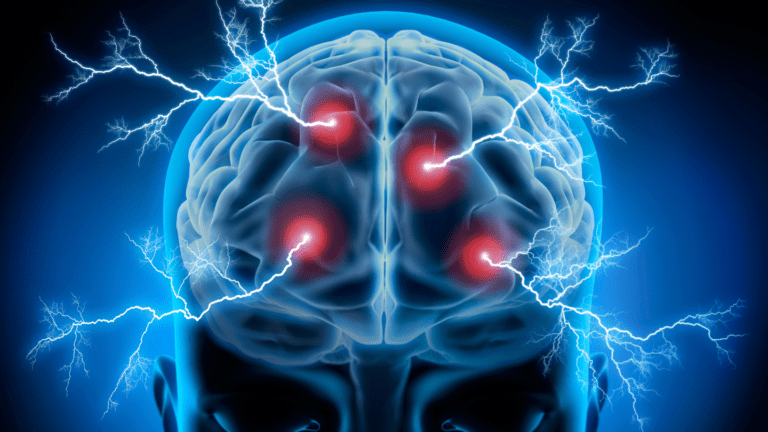
Understanding Routine EEG, QEEG, and Ambulatory EEG Tests
EEG, QEEG, and Ambulatory EEG are distinct forms of electroencephalography, each serving unique purposes in the diagnosis and monitoring of neurological conditions.


